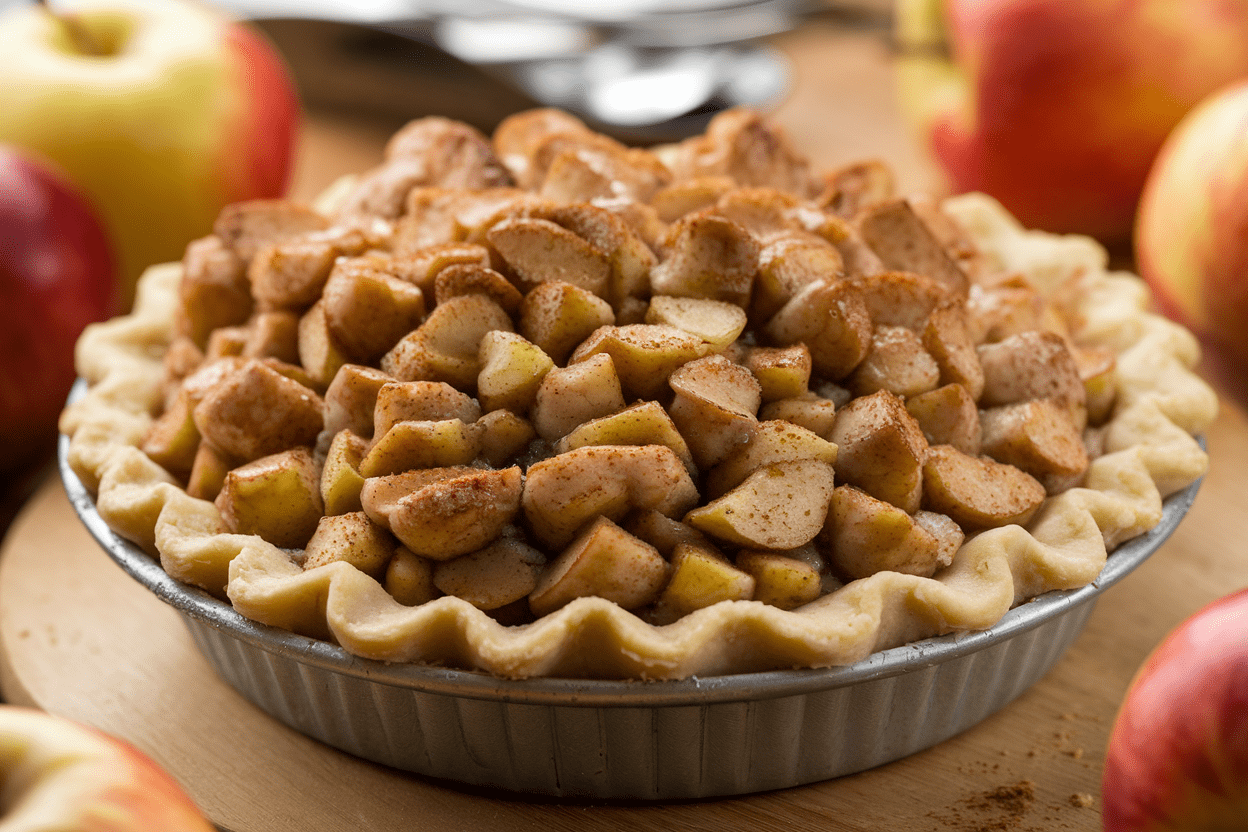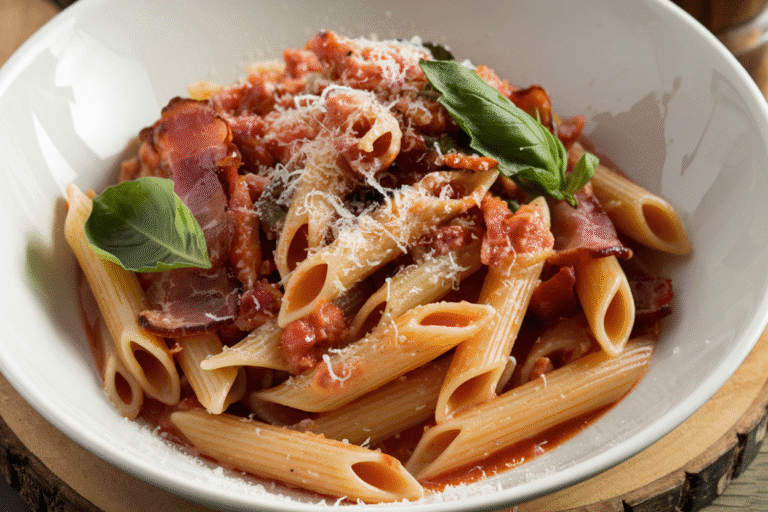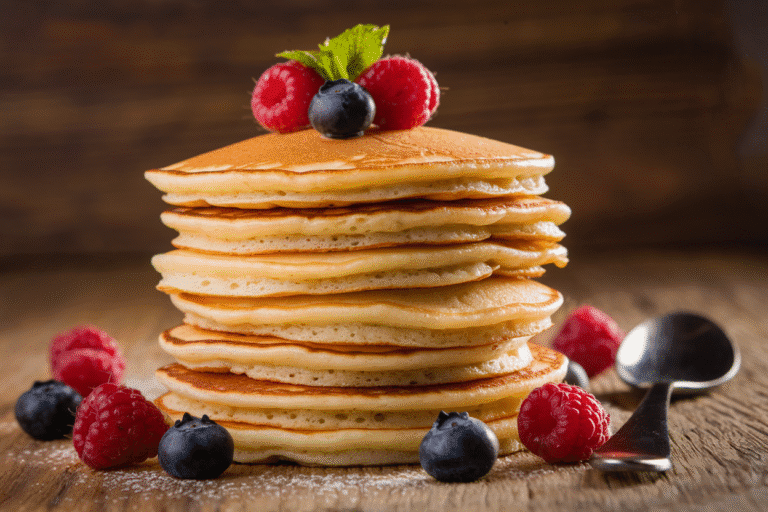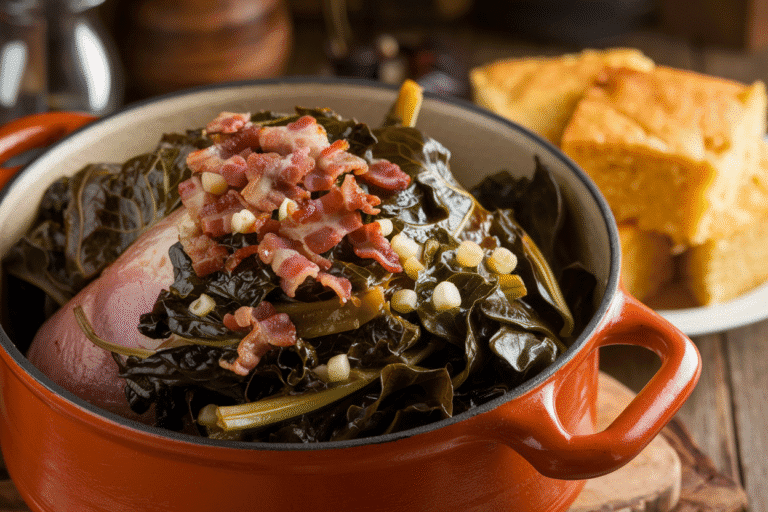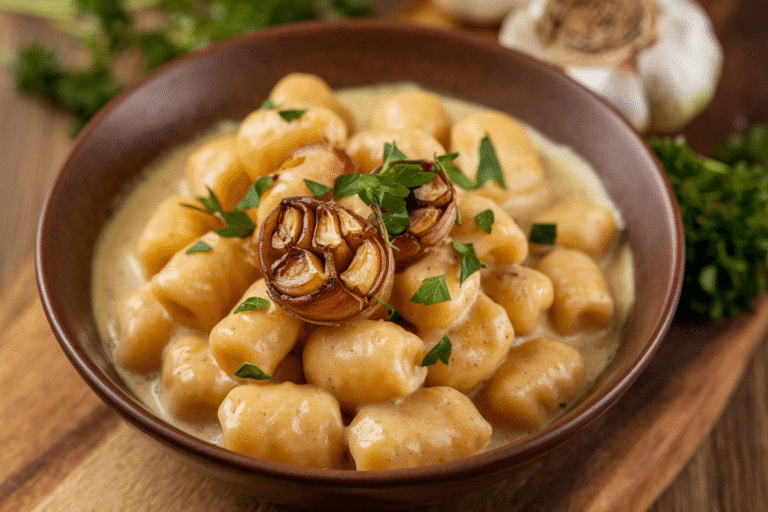The Only Flaky Pie Crust Recipe You’ll Ever Need (Crisp Edges, Tender Layers, Zero Stress)
You know that shatter-then-melt bite that makes people go silent at the table? That’s not magic—it’s strategy. The difference between a “meh” pie and a legendary one is the crust, and most folks overwork it, overhydrate it, or overthink it.
Today, you’ll make a crust that flakes like puff pastry but holds like a champ. Simple moves, smart temperature control, and a few pro tricks. Bake this once, and your family will think you have a baking degree (you don’t—just better intel).
What Makes This Recipe Awesome
- Ultra-flaky texture: Big, visible butter sheets create layers that puff and crisp.
The secret? Cold fat + minimal mixing + smart folding.
- Forgiving for beginners: Clear cues on how the dough should look and feel. No guesswork, no mystery.
- Versatile: Works for sweet or savory pies, double crust, lattice, hand pies—whatever you’re into.
- Flavor that stands out: A touch of acid and salt makes the crust taste like something you actually want to eat, not just a filling container.
- Make-ahead friendly: Dough rests in the fridge or freezer beautifully, so you can prep days ahead.
What Goes Into This Recipe – Ingredients
- 2 1/2 cups (300 g) all-purpose flour (spooned and leveled)
- 1 tablespoon granulated sugar (optional for sweet pies)
- 1 teaspoon fine sea salt
- 1 cup (225 g) unsalted butter, cold, cut into 1/2-inch cubes
- 1/3 cup (80 ml) ice-cold water, plus 1–3 tablespoons as needed
- 1 tablespoon apple cider vinegar (or lemon juice) mixed into the water
- Optional: 2–3 tablespoons vodka (replace part of the water for extra tenderness)
- For finishing: 1 egg beaten with 1 tablespoon water (egg wash), coarse sugar or flaky salt as desired
Let’s Get Cooking – Instructions
- Chill everything. Pop the butter cubes and a metal bowl into the freezer for 10 minutes.
Fill a measuring cup with ice water, add the vinegar, and keep it cold. Cold fat equals flakes.
- Mix the dry ingredients. In the chilled bowl, whisk flour, sugar (if using), and salt. Keep it quick so you don’t warm the bowl.
- Cut in the butter. Add butter to flour.
Using your fingertips or a pastry cutter, press butter into flat shards about the size of walnut halves and peas. You want a mix—some big, some small. Do not cream it.
- Add the liquid. Sprinkle in 1/3 cup of the ice water-vinegar mixture (or water + vodka combo).
Toss with a fork. Pinch a small handful—if it holds together with a few dry spots, you’re close. If it crumbles, add more liquid 1 tablespoon at a time.
- Bring it together. Turn the shaggy mixture onto a clean surface.
Gently gather into a rough square. This is not Play-Doh—if it looks messy, you’re doing it right.
- Do a fraisage. Using the heel of your hand, smear small portions of dough forward once to create streaks of butter throughout. Two or three quick passes, total.
This builds layers. Don’t overdo it.
- Laminate lightly. Pat into a rectangle. Fold it like a letter into thirds.
Rotate 90 degrees and repeat once. If the butter starts melting or the dough tears, stop and chill for 10 minutes.
- Divide and chill. Split into two discs for a double crust or leave whole for a slab pie. Wrap tightly and chill at least 1 hour (ideally 2).
Resting relaxes gluten and hydrates the flour.
- Roll it out. Flour your surface and rolling pin lightly. Roll from center outward, rotating the dough a quarter turn every few passes. Aim for 1/8-inch thickness.
If it fights back, chill 10 minutes and continue.
- Fit the pan. Lift the dough with your rolling pin and drape it into your pie dish. Gently ease it into the corners—don’t stretch. Trim overhang to 1 inch.
- For double crust: Add filling, top with second sheet of dough, trim to match, tuck and crimp.
Cut vents. For single crust: Dock with a fork if blind-baking.
- Chill before baking. Freeze the assembled crust 15–20 minutes until firm. This helps prevent shrinkage and boosts flake factor.
- Bake smart. For blind-baking: Line with parchment, fill with pie weights or dried beans, bake at 400°F (200°C) for 15–18 minutes.
Remove weights, brush with egg wash, and bake 8–12 minutes more until golden. For filled pies: Follow your pie’s filling temp, but start high at 425°F (220°C) for 15 minutes, then drop to 375°F (190°C) to finish.
- Cool properly. Let pies cool on a rack so the bottom stays crisp. Yes, waiting is annoying.
Worth it.
How to Store
- Raw dough: Wrap discs tightly and refrigerate up to 3 days or freeze up to 3 months. Thaw overnight in the fridge before rolling.
- Blind-baked shell: Cool completely, wrap, and store at room temp up to 24 hours or freeze up to 1 month.
- Baked pie: Keeps covered at room temp for 1 day (for fruit pies) or refrigerated up to 4 days. Re-crisp slices in a 350°F (175°C) oven for 8–10 minutes.
Health Benefits
- Real ingredients: Butter and flour beat ultra-processed crusts with additives you can’t pronounce.
- Portion control: A rich crust is satisfying, which can curb the “endless nibbling” problem.
Emphasis on can.
- Micronutrients: Butter provides fat-soluble vitamins like A and E. Not a multivitamin, but not nothing either.
- Customizable: You control the salt, sugar, and fat source—swap in whole-grain flour or use grass-fed butter if that’s your vibe.
Pitfalls to Watch Out For
- Warm butter = tough crust. If your kitchen is hot, chill your bowl, flour, and rolling pin. Work fast.
- Too much water. A sticky dough bakes up dense.
Add just enough for the dough to hold together with visible dry spots.
- Overmixing. It’s a crust, not a smoothie. Keep chunks of butter intact for flake.
- Skipping the rest. Resting hydrates flour and relaxes gluten. Impatient bakers end up with shrinkage.
Sad times.
- Underbaking. Pale crust = soggy bottom. Color equals flavor—golden brown is your goal.
Variations You Can Try
- All-butter + vodka: Replace 2–3 tablespoons of water with vodka for extra tenderness (alcohol evaporates, less gluten forms).
- Cheddar and black pepper: Add 1 cup finely shredded sharp cheddar and 1 teaspoon cracked pepper to the dry mix—amazing for apple or savory pies.
- Whole-wheat boost: Swap 1/2 to 3/4 cup of flour with white whole wheat. Add an extra teaspoon of water if needed.
- Herb crust: Mix in 2 teaspoons chopped fresh thyme or rosemary for savory pies.
FYI, it smells like a fancy bakery.
- Brown butter twist: Brown half the butter, chill until firm, then cube and proceed. Nutty flavor, still flaky.
FAQ
Can I make this in a food processor?
Yes—pulse flour, salt, and sugar, then add cold butter and pulse 6–8 times until pea-sized. Drizzle in cold liquid and pulse just until it clumps.
Stop before it forms a ball. Dump it out and finish by hand to avoid overworking.
What if I only have salted butter?
Use it and reduce added salt to 1/2 teaspoon. It’ll be fine.
Salted butter varies by brand, so taste a tiny bit if you want to be precise.
How do I prevent a soggy bottom?
Bake on the lower oven rack, start hot, and consider a preheated baking steel or sheet pan under the pie. Brushing the blind-baked shell with egg wash creates a moisture barrier. Also: let fruit fillings cool slightly so they’re not lava.
Why add vinegar or lemon juice?
A touch of acid tenderizes the dough by limiting gluten development and helps with texture.
You won’t taste it; you’ll just get better flake. Win-win.
Can I make it dairy-free?
Use a high-quality plant-based butter with a high fat percentage and keep it very cold. Avoid coconut oil alone—melts fast and can taste overpowering.
Shortening can be combined with vegan butter for structure.
Is blind-baking always necessary?
No. Use it for custards, cream pies, and very juicy fillings. For double-crust fruit pies, skip blind-baking but bake on a hot surface and give it enough time to brown deeply.
How thick should I roll the dough?
Aim for about 1/8 inch.
Too thin leads to tearing, too thick turns bready. If you can see faint light through it but it still feels sturdy, you nailed it.
My dough cracks when rolling. What now?
Let it warm 2–3 minutes and patch cracks with scraps, pressing lightly.
If it’s dry, flick on a teaspoon of water and smooth with the rolling pin. Don’t panic—ugly dough still bakes delicious, IMO.
Final Thoughts
This flaky pie crust recipe isn’t about perfection—it’s about control: cold butter, light hands, and enough rest. You’ll get towering layers, crisp bottoms, and a flavor that actually competes with the filling.
Keep the process chill (literally), trust the visual cues, and don’t fear the flour. Next holiday, when someone asks where you bought the crust, just smile and say, “Oh, this old thing?”
